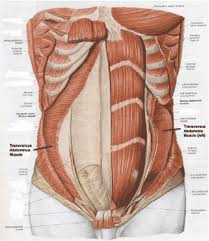It seems that everywhere you go, you hear people talking about strengthening your “core”. But what IS your core? Essentially, your core consists of your lumbar spine, pelvis, abdominal muscles and back muscles. When we talk about strengthening your core, we are referring to your abdominal and back muscles which help stabilize your spine so when you perform your activities – getting out of a car, bending down to lift a box or play basketball – your spine is protected and does not shift. If your core muscles are not strong enough to keep your spine stable, you will often get pain with activities.
Your core muscles are intimately connected to the vertebrae in your spine which allows them to provide stability. You must specifically target your core muscles during exercise in order to strengthen them. They are little muscles deep to your spine and are some of the most important muscles of your body.
Core Strengthening
When you begin core strengthening, whether it be at the gym, with a home video or with your physical therapist, it is important you start with basics because it is very easy for larger, stronger muscles to take over when doing exercises and mask the weakness in your core.

Your Transverse Abdominis is one of these important core muscles. This muscle spans around your sides or your abdominal region towards the front of your body. As such, when contracted, it forms a “corset” that supports your whole lower back. Here is an easy way to practice contracting your Transverse Abdominis.
Place two fingers on your hip bones in front where they stick out just to either side of your belly button. Go two fingers width in towards your belly button, then one finger width down. Put your tongue at the roof of your mouth and make a “tsss” sound. You should feel some muscles jump under your fingers. These are your Transverse Abdominis.
You can practice strengthening these muscles by lying on your back and, with your fingers over your Transverse Abdominis, try to push your lower back into the ground and “sandwich” your stomach into your spine. You should feel your Transverse Abdominis contract under your fingers as you do this. Since your Transverse Abdominis are endurance muscles, they need to contract all the time, in all positions, to provide stability to your spine.
Build Endurance
To build endurance, you can practice contracting your Transverse Abdominis lying down, then sitting up, then standing. You should be able to keep your Transverse Abdominis contracted while you are performing your daily activities such as walking, making the bed or getting out of a chair.
Next week, we will discuss the multifidus muscle, a back muscle that is the most important spinal stabilizer in your body. For more information on strengthening your core, especially if you have back pain, contact us at ProActive Physical Therapy and Sports Medicine for an evaluation.

